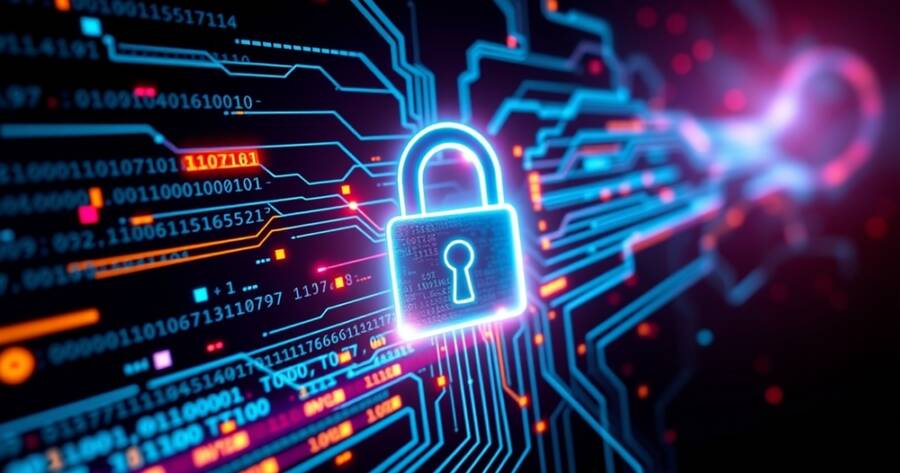In recent years, ransomware attacks have become one of the most significant cybersecurity threats to businesses of all sizes. These malicious attacks, where cybercriminals lock critical data or systems and demand a ransom for their release, have wreaked havoc across industries. The impact can be catastrophic, with companies losing sensitive data, suffering from downtime, and facing hefty financial costs.
Understanding the Ransomware Threat
Ransomware attacks typically begin with a cybercriminal gaining unauthorized access to a system, often through phishing emails, exploiting software vulnerabilities, or remote desktop protocol (RDP) brute force attacks. Once inside, the attacker encrypts files, rendering them inaccessible to the user, and demands a ransom, usually in cryptocurrency, to restore access. Some ransomware variants also threaten to leak sensitive information if the ransom is not paid.
The consequences of a ransomware attack go beyond financial loss. Companies often face reputational damage, legal ramifications, and a loss of customer trust. This is why it’s crucial to take a proactive approach in preventing and mitigating the risks of ransomware.
1. Implement a Robust Backup Strategy
One of the most effective ways to defend against ransomware is by maintaining frequent, secure backups. Regularly backing up critical data to an offline or cloud-based system ensures that, in the event of an attack, businesses can restore their systems without paying the ransom. It’s essential that backups are disconnected from the network or stored in a separate location that cannot be accessed or encrypted by ransomware. Additionally, verifying backups and testing recovery procedures is vital to ensure that data restoration will be successful when needed.
2. Regular Software Patching and Updates
Cybercriminals frequently exploit unpatched software vulnerabilities to launch ransomware attacks. Ensuring that all operating systems, software applications, and hardware devices are up-to-date is critical for defense. Implementing a patch management policy that regularly checks for and installs security updates is essential. Automatic updates can be configured for many systems to ensure that patches are applied promptly, reducing the risk of an exploit.
3. Employee Education and Awareness
Phishing is one of the most common delivery methods for ransomware. Cybercriminals often send deceptive emails containing malicious attachments or links that, when clicked, initiate the attack. Educating employees on the dangers of phishing and how to identify suspicious emails is crucial. Regular cybersecurity training sessions can help staff recognize red flags, such as unexpected email attachments or requests for personal information. Multi-factor authentication (MFA) can also add an extra layer of security, making it harder for attackers to gain unauthorized access.
4. Network Segmentation
Segmenting the network into isolated sections can help limit the spread of ransomware within an organization. By segmenting critical systems and sensitive data, an attack on one part of the network will not necessarily compromise the entire organization. Access controls should be enforced between segments, with only authorized users allowed to access specific areas of the network. Implementing least-privilege access ensures that employees and systems only have the necessary permissions to perform their tasks, reducing the risk of lateral movement by attackers.
5. Endpoint Detection and Response (EDR)
Using Endpoint Detection and Response (EDR) tools is another powerful strategy for combating ransomware. These tools continuously monitor endpoints (such as computers, servers, and mobile devices) for suspicious activity. When an endpoint shows signs of a potential ransomware attack, such as unusual file encryption behavior, the EDR solution can detect and neutralize the threat before it can spread. EDR systems also provide valuable insights into the attack’s origin and can help forensic teams investigate the incident further.
6. Incident Response Plan
Having a well-defined incident response plan (IRP) is critical when it comes to ransomware defense. The plan should include detailed procedures for detecting, containing, and recovering from an attack. It’s essential that all employees, particularly those in IT and cybersecurity roles, are familiar with the steps to take during a ransomware attack. The plan should outline how to report incidents, isolate affected systems, and engage law enforcement, if necessary. Having a well-practiced response plan can minimize the damage and downtime caused by a ransomware attack.
7. Consider Cyber Insurance
While prevention is the first line of defense, some organizations also opt for cyber insurance to help mitigate the financial impact of a ransomware attack. Cyber insurance policies can cover the cost of ransom payments, data recovery, legal fees, and business interruption. However, it’s important to note that many insurance providers require companies to implement specific cybersecurity measures before they are eligible for coverage.
Building Resilient Defenses Against Ransomware Attacks
Ransomware continues to pose a severe threat to businesses, but with the right defense strategies in place, organizations can significantly reduce their risk. A multi-layered approach involving regular backups, employee education, patch management, network segmentation, endpoint protection, and a well-prepared incident response plan is essential for staying one step ahead of cybercriminals. By prioritizing cybersecurity and investing in proactive measures, businesses can protect their data, systems, and reputation from the devastating impact of ransomware.
